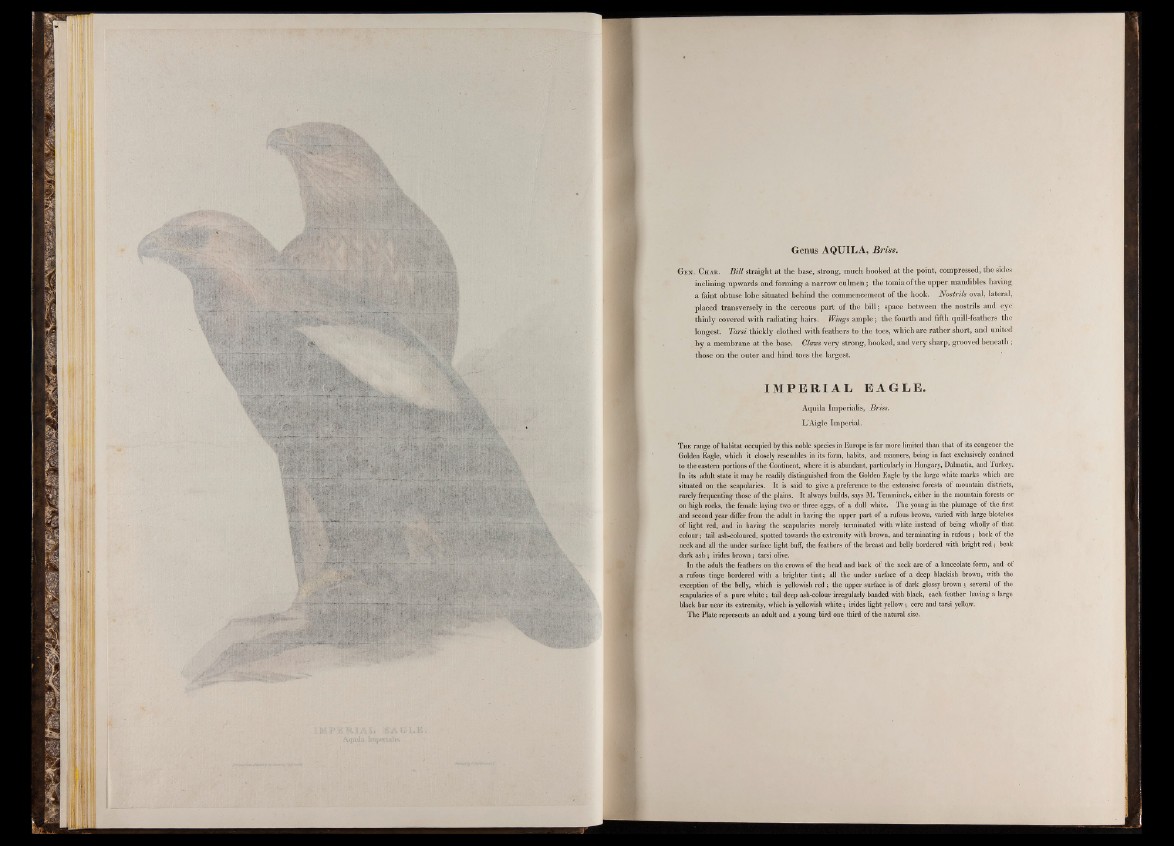
I
■ Genus AQUILA, Briss.
Gen. Char. Bill straight at the base, strong, much hooked at the point, compressed, the sides
inclining upwards and forming a narrow culmen; the tomia of the upper mandibles having
a faint obtuse lobe situated behind the commencement o f the hook. Nostrils oval, lateral,
placed transversely in the cereous part o f the b ill; space between the nostrils and eye
thinly covered with radiating hairs. Wings ample; the fourth and fifth quill-feathers the
longest. Tarsi thickly clothed with feathers to the toes, which are rather short, and united
by a membrane at the base. Claws very strong, hooked, and very sharp, grooved beneath ;
those on the outer and hind toes the largest.
IMP E R IA L EAGLE.
Aquila Imperialis, Briss.
L’Aigle Imperial.
T he range o f habitat occupied by this noble species in Europe is far more limited than that of its congener the
Golden Eagle, which it closely resembles in its form, habits, and manners, being in fact exclusively confined
to the eastern portions of the Continent, where it is abundant, particularly in Hungary, Dalmatia, and Turkey.
In its adult state it may be readily distinguished from the Golden Eagle by the large white marks which are
situated on the scapularies. It is said to give a preference to the extensive forests of mountain districts,
rarely frequenting those of the plains. It always builds, says M. Temminck, either in the mountain forests or
on high rocks, the female laying two or three eggs, of a dull white. The young in the plumage of the first
and second year diifer from the adult in having the upper part of a rufous brown, varied with large blotches
of light red, and in having the scapularies merely terminated with white instead of being wholly of that
colour; tail ash-coloured, spotted towards the extremity with brown, and terminating in rufous ; back of the
neck and all the under surface light buff, the feathers of the breast and belly bordered with bright red; beak
dark ash ; irides brown; tarsi olive.
In the adult the feathers on the crown of the head and back of the neck are of a lanceolate form, and of
a rufous tinge bordered with a brighter tint; all the under surface of a deep blackish brown, with the
exception of the belly, which is yellowish red ; the upper surface is of dark glossy brown ; several of the
scapularies of a pure white; tail deep ash-colour irregularly banded with black, each feather having a large
black bar near its extremity, which is yellowish white; irides light yellow; cere and tarsi yellqw.
The Plate represents an adult and. a young bird one third of the natural size.